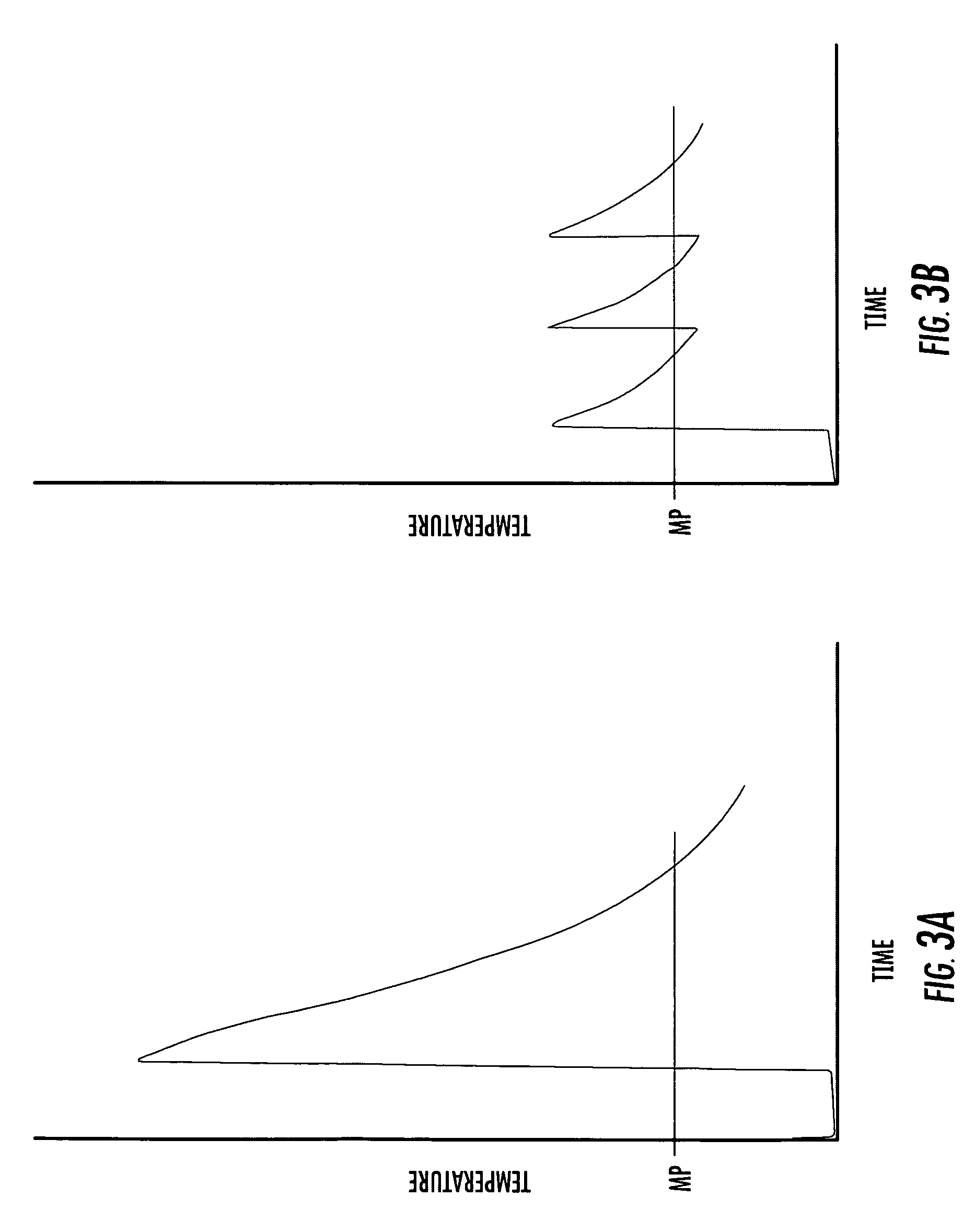Controlled densification of fusible powders in laser sintering
a laser sintering and fusible powder technology, applied in the direction of additive manufacturing processes, electric/magnetic/electromagnetic heating, manufacturing tools, etc., can solve the problems of dimensionally distorted parts, dimensionally distorted parts, and reduced strength of built parts, so as to avoid growth, improve accuracy, and increase the density of parts
- Summary
- Abstract
- Description
- Claims
- Application Information
AI Technical Summary
Benefits of technology
Problems solved by technology
Method used
Image
Examples
examples
[0050]The following Examples are for illustrative purposes only and should not be considered limiting in any way.
[0051]In the following examples, the samples were prepared by sintering a layer of DuraForm® nylon powder with from 1 to 3 scans at varying laser intensities. A 100 watt high speed Vanguard™ V207 laser sintering system available from 3D Systems, Inc. was used to form the samples.
[0052]For convenience, the examples in FIG. 5, which may be considered Table 1, illustrate multiple scans of equal low power.
[0053]In some cases, the examples show relative tensile elongation improvements of 100% or better compared to a conventional single scan technique (column for 1 scan in FIG. 5) and improvements of approximately 30% in elongation compared to elongations of approximately 10% for the conventional technique.
[0054]It should be recognized that multiple scans at too high a power will result in growth, as shown in FIG. 5 for the example of 10 scans at 7 watts.
[0055]Multiple scanning...
PUM
| Property | Measurement | Unit |
|---|---|---|
| elongations | aaaaa | aaaaa |
| elongations | aaaaa | aaaaa |
| elongations | aaaaa | aaaaa |
Abstract
Description
Claims
Application Information
 Login to View More
Login to View More - R&D
- Intellectual Property
- Life Sciences
- Materials
- Tech Scout
- Unparalleled Data Quality
- Higher Quality Content
- 60% Fewer Hallucinations
Browse by: Latest US Patents, China's latest patents, Technical Efficacy Thesaurus, Application Domain, Technology Topic, Popular Technical Reports.
© 2025 PatSnap. All rights reserved.Legal|Privacy policy|Modern Slavery Act Transparency Statement|Sitemap|About US| Contact US: help@patsnap.com



